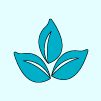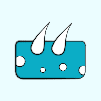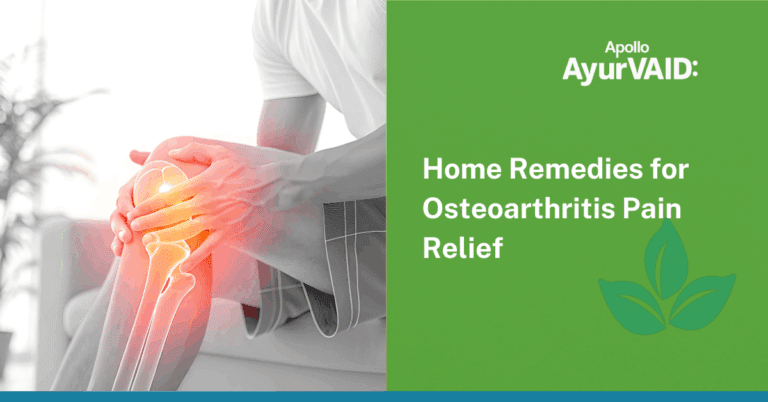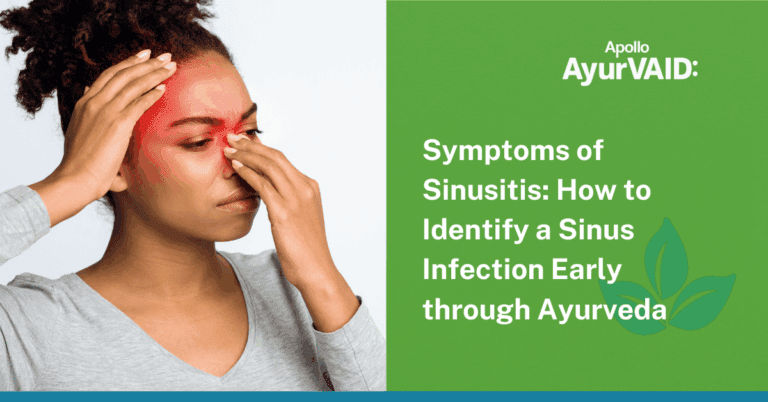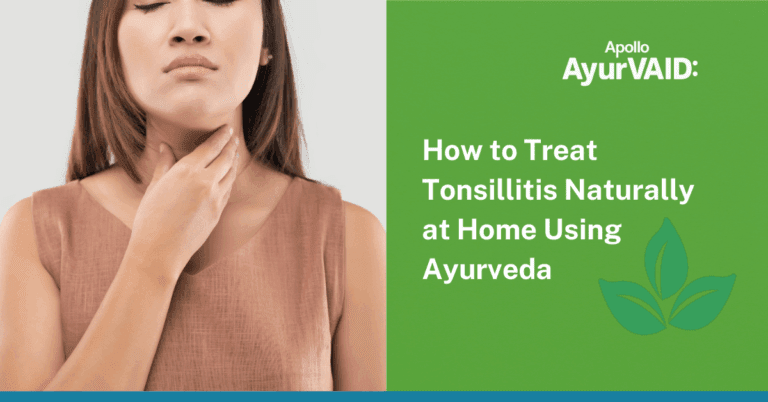Introduction
When a family calls a doctor after a sudden collapse or slurred speech, doctors often have the same question: “Did we miss something?” That question is why World Stroke Day (October 29th) matters so much. A stroke can feel sudden and merciless, but many of its risks are known and many of its outcomes—if recognised early—can be managed. On this stroke day, let us speak plainly, with kindness and clarity, about what we can do together to prevent, recognise and support recovery from stroke.
The intersection of Ayurveda and modern medicine honours the urgency of acute medical care and gentle, practical ways Ayurveda supports prevention and healing without replacing emergency treatment. Apollo AyurVAID stands for that very balance — compassionate, science-minded care that meets people where they are.
A simple truth: every minute counts
A stroke is a sudden disturbance in blood flow to the brain. In those first minutes and hours, modern emergency care can save brain tissue, preserve function, and change a life’s path. That’s why public messages on World Stroke Day awareness emphasise rapid recognition — the FAST (Face, Arm, Speech, Time) or BE FAST tool — and immediate action. If you notice a face droop, arm weakness, or speech difficulty, call emergency services right away. Do not wait.
At the same time, many strokes are preventable. When we talk about stroke prevention, we are talking about everyday choices — how we eat, how we sleep, what we carry in our hearts — and also about health checks for blood pressure, blood sugar and lipids. Prevention means loving yourself enough to measure and manage these hidden numbers.
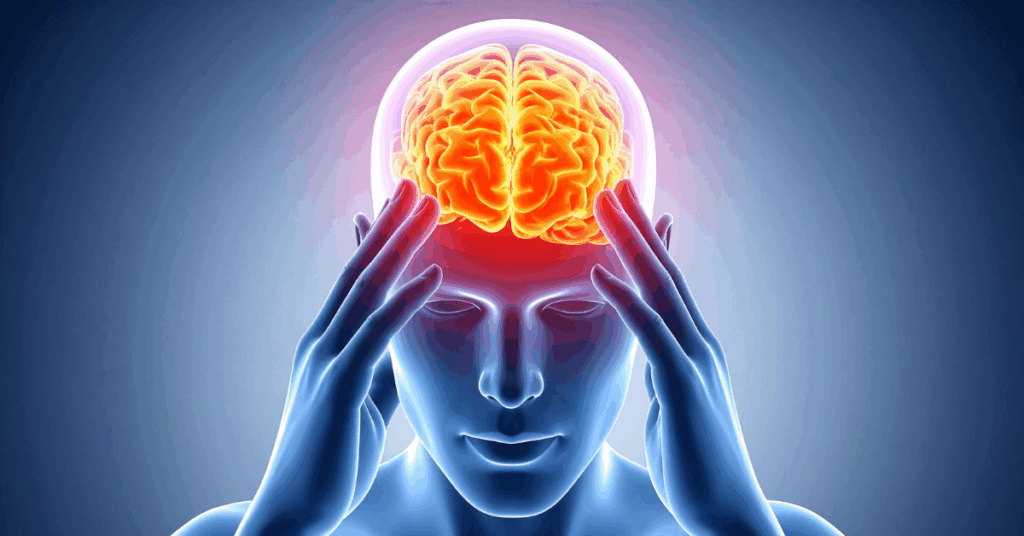
Stroke: An Ayurveda Perspective
In Ayurveda, stroke is referred to as Pakshaghata—‘Paksha’ meaning one side of the body, and ‘Aghata’ indicating injury or paralysis. It is classified under Vata Vyadhi, caused by an imbalance of Vata Dosha, which is responsible for movement and neural activity.
Pakshaghata is broadly categorised into:
Dhatukshayajanya – Caused by chronic Vata aggravation and degeneration of Majja Dhatu (nervous tissue), common in the elderly or those with diabetes, hypertension, or neurodegenerative conditions.
Avaranajanya – Marga Avarana (blockage of normal movement of Vata) by Kapha, Pitta, or Ama (metabolic toxins), with an acute stroke-like picture, predominantly ischemic.
Stroke patients tend to experience recovery issues in the form of neuroinflammation, blood-brain barrier dysfunction, and secondary complications such as anxiety, fatigue, sleep disorders, and gastrointestinal symptoms.
Apollo AyurVAID’s Integrative Stroke Rehabilitation Program blends “Precision Ayurveda” with evidence-based therapies such as physiotherapy, occupational therapy and speech therapy to address both root causes and the functional symptoms of stroke. The program emphasises an individualised, protocol-driven plan that uses classical Ayurveda interventions (therapeutic oils, targeted Panchakarma where appropriate, rasayana support), structured rehabilitation exercises, and modern diagnostics to promote neurological recovery and improve daily function. This model aims to provide safer, faster, and more comprehensive recovery pathways for stroke survivors by coordinating neurological care with restoration.
Practical steps for stroke prevention
Prevention is the most generous thing we can do for ourselves and those we love. From an Ayurveda standpoint, many stroke risks—hypertension, chronic inflammation, metabolic disturbance—grow quietly over the years. Simple, steady practices can reduce those risks:
- Daily rhythm (dinacharya): Consistent wake/sleep times, regular meals, and gentle evening routines keep doshas in balance and stabilise blood pressure.
- Mind-care: Short daily practices — 5 minutes of mindful breathing, gentle pranayama, or a calming bedtime routine — reduce chronic stress (a hidden driver of hypertension).
- Food choices: Favour cooked, easily digestible meals; include anti-inflammatory spices (turmeric, ginger) and limit excessive salt, sugar, and fried foods.
- Movement: Brisk walking, yoga asanas for balance, and simple strength work help vascular health and glucose control.
- Health checks: Regular screening for blood pressure, blood sugar, and lipids — and following prescribed medications faithfully — are non-negotiable.
These recommendations are not a replacement for medication when needed, but they are practical, accessible steps individuals and families can take now. They can sit comfortably with blood pressure control, statins, or diabetes medicines prescribed by physicians.
When a stroke happens: urgency, then support
If a stroke occurs, immediate biomedical care is the priority — clot-busting therapies or other interventions can be lifesaving. After the emergency is over, recovery is a long, tender journey. This is where integrative care shines.
Ayurveda measures such as abhyanga, certain detoxification procedures (carefully selected Panchakarma under supervision), rasayana (rejuvenative) therapies, and guided diet can help with muscle tone, sleep, mood and overall vitality. Importantly, these therapies should be integrated with physiotherapy, speech therapy, and neurorehabilitation — not substituted for them. At Apollo AyurVAID, we make that collaboration explicit: neurologists, therapists, and Ayurveda physicians work as a team to design safe, individualised plans.
Recovery is not a race but a series of small recoveries — a smile restored, a finger that moves, a word spoken. Celebrate them. Be persistent. Healing often requires patience, consistency, and hope.
How to spread World Stroke Day awareness in your circle
Raising awareness doesn’t require grand gestures. The most effective things are rooted in relationship and clarity:
- Teach the FAST signs to your household and workplace. Practice once — share a short video or role-play it.
- Make blood pressure checks a family habit. Keep a simple record.
- Share survivor stories; they teach with heart.
- Organise a local screening or a small talk at your community centre or place of worship, where people can ask questions without fear.
- Use social media kindly — short posts about prevention and urgent signs reach many.
On stroke day, small ripples become waves when communities act together.
A compassionate reminder
If you are caring for someone who has had a stroke, be gentle with yourself. Rehabilitation is exhausting, and caregivers need care, too. Practical help — a doctor who explains the therapy plan in simple terms, a physiotherapist who sets realistic goals — can change the entire tone of recovery. Ask for help, accept it, and hold hope.

